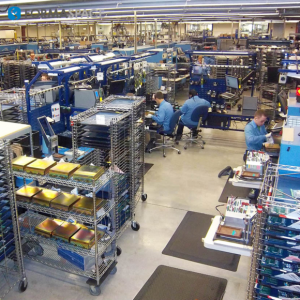Find out how smart connected devices can help manufacturing companies make the most of green energy sources such as wind and solar.
— Formaspace
AUSTIN, TEXAS, UNITED STATES, April 18, 2023/EINPresswire.com/ — Green Timing Poses An Opportunity – And A Major Challenge – For Manufacturing Companies
Cheap renewable energy from solar and wind sources offers a great opportunity for manufacturing companies that are urgently seeking ways to significantly reduce their expenditures on expensive energy supplies.
But getting there will require some significant changes in the way the energy is consumed by people.
In this Formaspace report, we look at the opportunities and challenges of Green Timing, the practice of optimizing energy use to synchronize it with green energy production.
What’s All The Fuss About? Why The Need To Change?
The traditional role of electricity grid operators is to carefully match the production of electricity with the rate of demand. But if demand ever exceeds supply, the grid operators will need to initiate sudden blackouts to protect the grid from damage.
The traditional approach grid operators have used for decades is to produce daily “energy use” forecasts and place power generation sources (whether coal, gas, nuclear, or hydroelectric) on standby reserve, ready to fire up as demand rises.
Electricity demand typically surges in the morning as people rise to prepare for work and school. It peaks again in the late afternoon as workers come home and switch on air conditioners to cool buildings or use appliances for cooking or cleaning. Demand then drops significantly overnight.
To smooth out the demand curve, utilities have long offered variable rates to industrial customers (and residential customers with smart meters), encouraging them to use more electricity at night and less during the day – which reduces the need for capital investments in new power generation facilities to meet peak demand during the day.
Renewable Energy Sources Are Significantly Cheaper But Far Less Predictable
Renewable energy sources, such as solar and wind, have thrown a monkey wrench into the careful planning matching production with demand.
Wind and solar energy production can provide significant amounts of very cheap electricity during the day – with far less capital investment compared to building a new fossil fuel or nuclear power plant (assuming there are sufficient transmission lines to connect them to the major power grids).
However, as soon as the sun goes down (which also tends to cause the winds to decrease), utility operators need to turn to other energy sources to keep the lights on. (Cloudy or windless days also curtail solar and wind energy significantly, adding to the unpredictability issue.)
AI-Powered Tools Can Forecast Availability Of Green Energy Sources
Thus, renewable solar and wind are both a salvation (due to their low cost) and a curse (due to unpredictability) for utility operators.
Assuming for a moment that storing electricity at scale is not yet economical – operators and federal regulators are looking at how to implement Green Timing mechanisms that match electric demand with production.
Traditionally energy utilities have relied on variable pricing to encourage industrial and consumer users to change their behavior.
Back in the day, industrial manufacturing companies could (if they chose to) adjust their energy-intensive process schedules to take advantage of lower electricity rates at night.
But with solar and wind, the cheapest time of day to produce electricity on a sunny day might be in the heat of the afternoon, when the sun and the winds are strongest – but the situation might be different on a windless, cloudy day.
Utility operators are expanding their forecasting tools by adding AI-powered data analysis capabilities to predict when the “greenest” electricity will be available.
However, on the demand side, keeping track of these changes “manually” throughout the day is too difficult for industrial and consumer users – making this an ideal problem to automate.
This is where Green Timing and micro-scheduling come into play – an approach where utility operators share their green energy usage and production forecasts directly with smart, internet-connected appliances and equipment.
Apple recently introduced a Green Timing feature for iPhones. The company gathers energy supply data from utility operators across the country and uses an AI-powered algorithm to adjust when each iPhone draws power from the local grid to top up its battery. For example, if Apple knows the phone is plugged in during the day, it might recharge it when more solar and wind power is available in the area.
Julia Solodovnikova
Formaspace
+1 800-251-1505
email us here
Visit us on social media:
Facebook
Twitter
LinkedIn
![]()
Originally published at https://www.einpresswire.com/article/628446971/green-timing-is-the-new-smart-grid-technology






